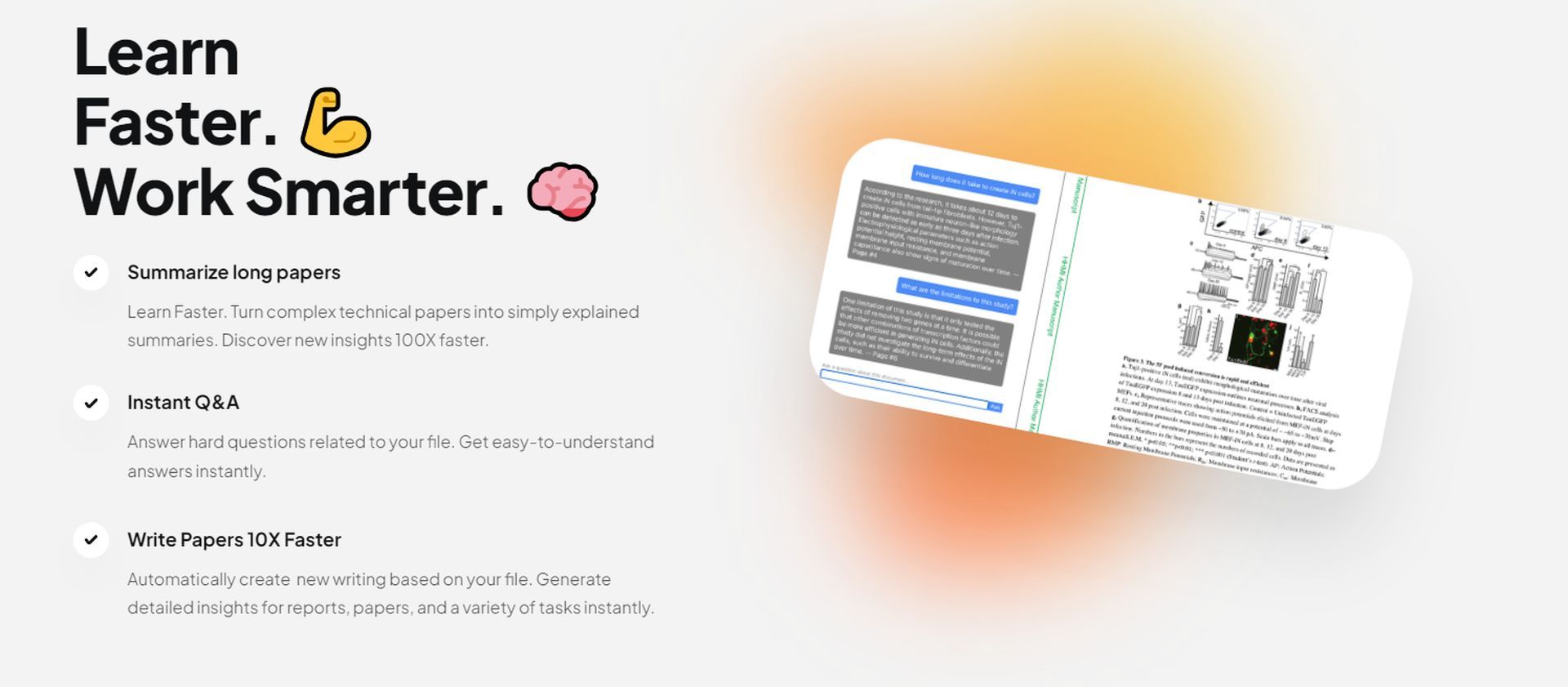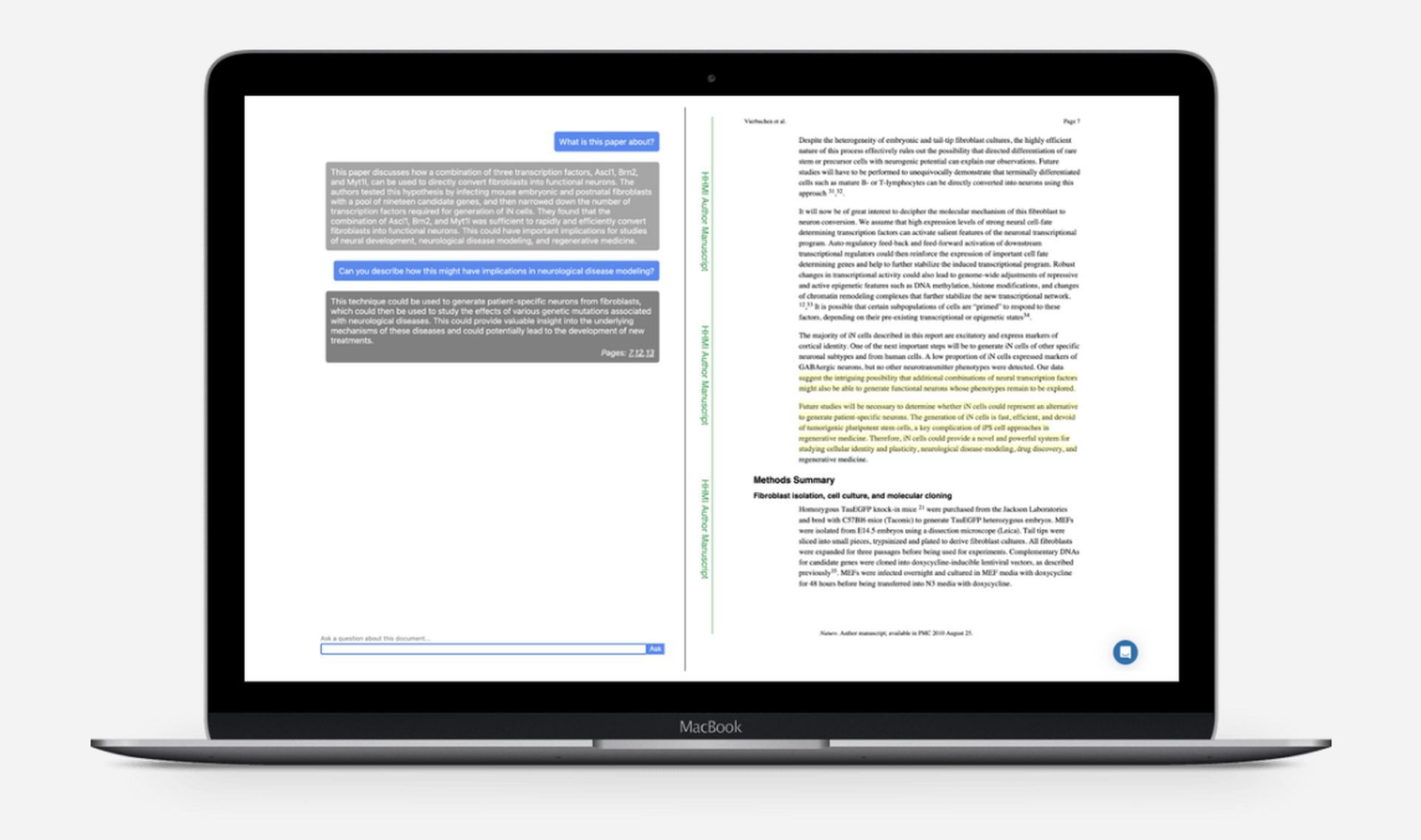The cutting-edge platform Humata AI, which is driven by artificial intelligence, is revolutionizing the method that academics use to extract insights and recognize patterns from massive datasets.
Through the use of natural language processing and machine learning, Humata AI offers a cutting-edge approach to information analysis that is superior to more traditional methods.
Artificial intelligence (AI) has significantly advanced in recent years, revolutionizing several sectors and enhancing our everyday lives. The development of Humata AI, a ground-breaking technology that aspires to empower people by enhancing their talents and encouraging symbiotic interactions between people and machines, is one significant development in this area. The idea of Humata AI, its uses, and its potential to influence our future are all examined in this essay.

Understanding Humata AI
A kind of artificial intelligence called “Humata AI,” which is taken from the ancient Avestan term “Humata,” which means “good thoughts,” is devoted to improving rather than replacing human potential. Humata is based on the core idea of combining the advantages of people and robots to work in unison and synergistically.
Humata AI aspires to enhance human capacities, intellect, and creativity in contrast to standard AI systems, which mainly aim to automate jobs and replace human labor. It combines the accuracy, speed, and depth of AI algorithms with the value of human intuition, emotions, and empathy.
Capability
A developing platform called Humata has drawn interest from academic fields including economics, biology, and medicine. This ground-breaking technology can spot patterns and trends in datasets that were previously invisible, giving academics access to previously unheard-of information and facilitating the creation of ground-breaking solutions. So, what are the benefits of Humata AI?
By using cutting-edge algorithms to process enormous amounts of data far faster than conventional manual methods, Humata AI revolutionizes research. Humata AI streamlines research and conserves critical time and resources by automating data processing.
Humata uses machine learning and natural language processing to recognize complex patterns and trends that are practically hard for people to spot on their own. This improved accuracy leads to more accurate and reliable study findings.
Through its simultaneous usage capabilities, Humata encourages collaboration and knowledge sharing among numerous scholars. The collaborative capabilities of the platform enable seamless teamwork, speed up the rate of discovery, and promote multidisciplinary breakthroughs.
Additionally, Humata stands out for its capacity to provide academics with fresh perspectives and ideas. Humata AI promotes creative problem-solving techniques by revealing hidden linkages among datasets, expanding our understanding of the world, and fostering creativity.
How does it work?
To glean valuable insights from huge datasets, Humata AI uses a variety of cutting-edge AI algorithms. These methods comprise:
- NLP: Natural Language Processing.
- Computer learning.
- Visualizing data.
Let’s take a closer look.

NLP: Natural Language Processing
To understand the meaning of textual material, Humata AI uses the capabilities of natural language processing. Research papers, news stories, legal documents, and other materials may all be analyzed by Humata to get useful insights that advance the field of study.
Computer learning
Humata locates complex patterns and relationships inside datasets by using machine learning methods. Researchers may more confidently and accurately make data-driven judgments by looking at numerous factors at once.
Visualizing data
Data visualization methods are used by Humata to portray complicated information in a way that is simple to comprehend. Researchers may discover patterns and trends in raw data that could otherwise go undetected, allowing for a higher level of analysis and interpretation.
Humata AI: How to use it for free?
Humata AI offers users the opportunity to utilize its powerful capabilities for free. By following a simple process, you can upload files, have them analyzed, and receive a summary of the findings, along with valuable answers and insights. Here’s how you can make the most of Humata AI without any cost:
Register on the Humata AI website:
- Visit the Humata AI website and navigate to the registration page.
- Sign up for an account by providing the required information.
Upload your PDF or DOCX file:
- Once registered, log in to your Humata account.
- Locate the “Uploading Files” button and click on it.
- Choose the PDF or DOCX file that you want to analyze from your computer’s storage.
Initiate the analysis:
- After selecting the file, wait for it to be successfully uploaded to the platform.
- Once the upload is complete, navigate to the menu and click on the “Analyze” option.
Request processing and generation of insights:
- Specify your preferences and requests for data processing.
- Depending on the options you choose, Humata will begin processing your data.
- Allow some time for Humata to analyze the file and generate a summary, answers, and insights based on your requests.
Download or share the findings:
- Once the analysis is complete, you will be presented with the study’s findings.
- Download the generated summary, answers, and insights to your device for further reference.
- If desired, you can also distribute the findings to others, such as colleagues, teammates, or collaborators.
By following these steps, you can take advantage of Humata AI’s free offering and leverage its powerful capabilities to analyze your files, obtain valuable insights, and share the generated findings with others.

The future of Humata AI
Our future can be shaped in innumerable ways thanks to Humata AI. Humata can help create a society that is more wealthy and equitable by utilizing the potential of AI while acknowledging and conserving human values. The interaction of people and technology can improve well-being, productivity, and creativity.
But there are ethical issues, just like with any technical development. It is critical to guarantee that Humata AI is created with a strong focus on openness, confidentiality, and justice. To fully utilize the capabilities of Humata AI, it is also essential to address concerns about job displacement and redefine the function of people in an AI-driven future.
Humata AI’s ability to build a happy coexistence between humans and technology, where AI enhances human abilities, makes it transformational. This approach reframes AI as a tool to improve our skills and lifestyles rather than a threat to human jobs.
Empathy and emotional intelligence are key to Humata AI. AI systems analyze massive amounts of data and make data-driven judgments, but they lack emotional empathy and intuition. Instead, humans understand emotions, empathy, and complicated social connections. Humata AI makes machine-human interactions more meaningful and humane by incorporating emotional intelligence into AI systems.
Humata AI can aid in mental health therapy. AI-powered virtual assistants can respond with empathy and coping strategies to talks. These virtual assistants can augment traditional therapy and be available 24/7, making mental health help more accessible. Humata AI also prioritizes data privacy. Data security and privacy concerns have increased as AI systems become more pervasive in our lives. Humata AI developers must address privacy frameworks and data ownership. Earning public trust and approval requires balancing data use for AI improvement and user privacy.
Humata highlights AI ethics and bias mitigation. AI systems may perpetuate training data biases, resulting in discrimination. To eliminate biases, Humata AI should be developed using human values and ethics. Transparency in AI decision-making helps humans understand how AI reached specific conclusions or suggestions.
Education and workforce development will help Humata AI reach its full potential. Adaptable abilities like critical thinking, problem-solving, creativity, and emotional intelligence are needed to prepare the workforce for AI. Businesses and schools must work together to ensure that AI enhances human talents rather than replacing them.
Humata AI’s interdisciplinary model includes AI experts, psychologists, sociologists, ethicists, and others. Diversity can help AI systems prioritize human well-being and social benefits.

Conclusion
Humata is a ground-breaking platform powered by artificial intelligence that is revolutionizing how academics draw conclusions and spot trends from huge datasets. Humata, in contrast to conventional AI systems, attempts to maximize human potential by fusing the advantages of people and robots. Humata provides a strong and effective method for data analysis that uses natural language processing, machine learning, and data visualization to produce more accurate results and foster academic collaboration.
Humata’s open accessibility enables users to take advantage of its capabilities, producing priceless insights and sharing them with others. To achieve a balanced and advantageous integration of Humata into society, ethical issues like workforce development, bias mitigation, and privacy must be addressed.
Human values, emotional intelligence, and interdisciplinary collaboration are given priority by Humata, which has the potential to lead to a peaceful coexistence of humans and technology, enhance many facets of our lives, and promote societal advancement.
Read more:
- 17 best AI 3D model generators and how to choose between them
- 11 best Character AI Bots you can chat with
- Best AI Code Writers (2023)
Featured image credit: Unsplash





